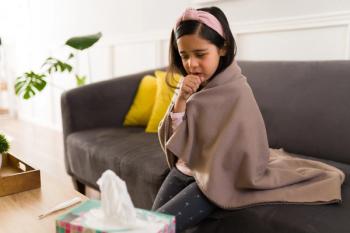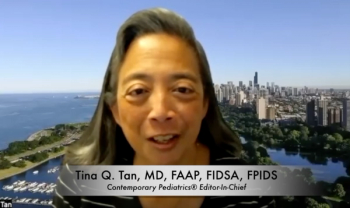
In a recent statement, the American Academy of Pediatrics discussed how patients with respiratory infections can be managed, along with guidance on RSV treatment.

In a recent statement, the American Academy of Pediatrics discussed how patients with respiratory infections can be managed, along with guidance on RSV treatment.

Tina Q. Tan, MD, FAAP, FIDSA, FPIDS, discussed the potential threat of a “triple epidemic” of RSV, influenza, and COVID-19, and how pediatricians can identify these viruses in their communities.

Tina Q. Tan, MD, FAAP, FIDSA, FPIDS, sits down to discuss the rising threat of a "triple epidemic" consisting of influenza, COVID-19, and RSV in children.

Gregg Sylvester, MD, MPH, chief health officer at CSL Seqirus, discusses an FDA-approved cell-based flu vaccine for children as young as 6 months, trends in childhood vaccination rates, and how to prepare for the upcoming flu season.

The news is full of stories about monkeypox, the recent changes to COVID-19 guidance, and the return of polio cases. What do clinicians need to know?

Help your patients have a safe and healthy academic year.

For the first time, investigators broke down into narrow age bands morbidity and mortality estimates for respiratory syncytial virus (RSV).

A recent study examined the links between breastfeeding and preterm birth history with hospitalization duration due to LRTIs in infants and toddlers.

The FDA recently announced an e-cigarette prevention campaign aimed at Native American and Alaskan Native youth using prominent social media sites and traditional media like billboards, radio, and TV.

Patience and antimicrobial stewardship are key to treating sinusitis.

A new study examines the relationship between an extended duration of mother-child breastfeeding and protective associations to asthma.

Find out the various ways you can connect and learn through the Leukemia & Lymphoma Society!

Previous investigation has shown that common measurements and tools may not be as accurate in non-White patients as they are in White patients. A new investigation dives into whether pulse oximetry falls into this category.

An investigation examines what demographic factors and less-than-optimal respiratory support in or beyond the neonatal intensive care unit can increase the risk of abnormal lunch function on extremely low gestational age newborns (ELGANs).

Scott Kober sits down with Dr. Joseph Domachowske, Professor of Pediatrics, Professor of Microbiology and Immunology, and Director of the Global Maternal-Child and Pediatric Health Program at the SUNY Upstate Medical University.

An investigation examines whether a treatment of hydrocortisone could lead to a reduction in moderate to severe bronchopulmonary dysplasia and neurodevelopmental outcomes at age 2 years.

What the HCP community can do to change our approach

Thirdhand smoke exposure poses a health threat to children. New research examines the factors that may lead to some children having more exposure than others.

Decreased lung function may be a result of a preterm delivery. Does treatment with long-acting β2 agonists (LABA) plus inhaled corticosteroids perform better than just inhaled corticosteroids to improve lung function in affected children?

Used to treat asthma in adolescents and adults, a clinical trial examines whether it would be effective in treating uncontrolled asthma in younger children.

In spite of the availability of effective treatments, asthma is not always well controlled among teenagers. An investigation examines whether using peers to helm education efforts can lead to improved outcomes.

The jury is out on whether testing or exposure better explains the unseasonable surge of respiratory syncytial virus.

The US Food and Drug Administration has accepted a Priority Review of the pneumococcal 15-valent conjugate vaccine VAXNEUVANCE™ in children aged 17 years and younger.

The National Institutes of Health announced the launch of a long-term study into the long ranging outcomes of recovering from COVID-19 in children, adolescents, and young adults.

An investigation examines whether safety communications from the US Food and Drug Administration (FDA) in 2017 and 2018 led to reductions in the prescription of cough and cold medications with codeine and hydrocodone.